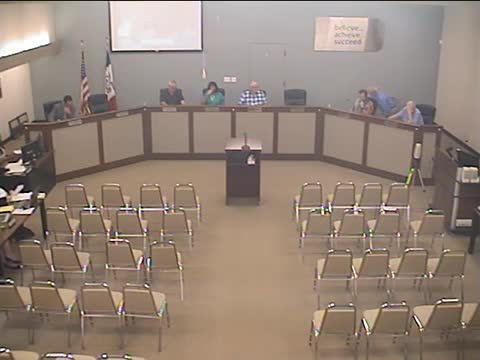Early retirement program sparks heated debate among educators
June 10, 2024 | Sioux City Comm School District, School Districts, Iowa

This article was created by AI summarizing key points discussed. AI makes mistakes, so for full details and context, please refer to the video of the full meeting. Please report any errors so we can fix them. Report an error »

During a recent government meeting, discussions centered around the district's early retirement program for teachers, highlighting its financial implications and the ongoing staffing challenges faced by the district.
A key point raised was the limited number of teachers eligible for early retirement, with only 33 individuals meeting the criteria of being 62 years old with 25 years of service. The analysis presented indicated that while the program incurs costs, it also results in financial benefits through lower salaries and reduced payroll taxes when replacing retiring teachers with less experienced hires. For instance, hiring a new teacher could save the district approximately $39,600 in the first year alone, leading to aggregate savings exceeding $104,000 over three years.
Concerns were voiced regarding the potential for increased sick leave usage among teachers if the early retirement program were to be eliminated. The financial burden of covering for absent teachers could escalate, with costs for substitutes averaging over $600 per day. This raises questions about the overall cost-effectiveness of discontinuing the program.
Director Miller expressed opposition to eliminating the early retirement program, arguing that the financial data does not support such a move and that it could lead to unintended consequences, such as increased sick leave costs. Conversely, Director George noted the staffing shortages the district is currently facing, suggesting that the policy should be reviewed and potentially edited rather than eliminated outright.
The discussion revealed a divide among board members regarding the necessity and effectiveness of the current early retirement policy. While some members advocated for a thorough review to enhance benefits for retirees, others questioned whether the policy was functioning as intended or if it needed adjustments to better align with the district's staffing needs.
As the policy committee continues to work on this issue, the meeting underscored the complexities of balancing financial considerations with the need to retain experienced educators in the district. The outcome of these discussions will likely influence future staffing strategies and the overall approach to teacher retirement benefits.
A key point raised was the limited number of teachers eligible for early retirement, with only 33 individuals meeting the criteria of being 62 years old with 25 years of service. The analysis presented indicated that while the program incurs costs, it also results in financial benefits through lower salaries and reduced payroll taxes when replacing retiring teachers with less experienced hires. For instance, hiring a new teacher could save the district approximately $39,600 in the first year alone, leading to aggregate savings exceeding $104,000 over three years.
Concerns were voiced regarding the potential for increased sick leave usage among teachers if the early retirement program were to be eliminated. The financial burden of covering for absent teachers could escalate, with costs for substitutes averaging over $600 per day. This raises questions about the overall cost-effectiveness of discontinuing the program.
Director Miller expressed opposition to eliminating the early retirement program, arguing that the financial data does not support such a move and that it could lead to unintended consequences, such as increased sick leave costs. Conversely, Director George noted the staffing shortages the district is currently facing, suggesting that the policy should be reviewed and potentially edited rather than eliminated outright.
The discussion revealed a divide among board members regarding the necessity and effectiveness of the current early retirement policy. While some members advocated for a thorough review to enhance benefits for retirees, others questioned whether the policy was functioning as intended or if it needed adjustments to better align with the district's staffing needs.
As the policy committee continues to work on this issue, the meeting underscored the complexities of balancing financial considerations with the need to retain experienced educators in the district. The outcome of these discussions will likely influence future staffing strategies and the overall approach to teacher retirement benefits.
View full meeting
This article is based on a recent meeting—watch the full video and explore the complete transcript for deeper insights into the discussion.
View full meeting
